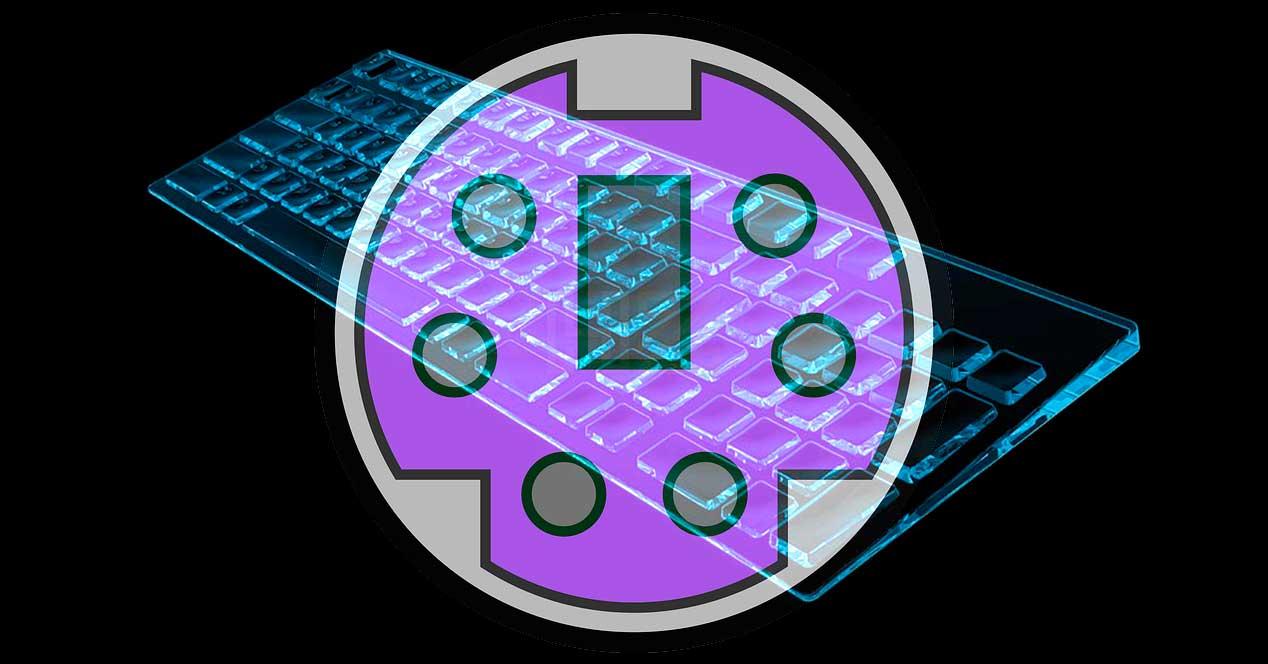Those of us who already comb gray hair surely remember very well a port that has been in disuse for decades and which, however, is resigned to dying. Logically, we are talking about PS/2, where keyboards and mice were attached to it as a communication port with the motherboard. Interestingly, of the two, the one who put it aside was the first, which was suspicious. These are the reasons the PS/2 was first eradicated from PC keyboards.
Well, it was a controversial issue that was pushed by several factors, the main one and curiously not expected at all (irony off) was the user himself, who took it upon himself, as happens with the USB-A for decades, giving it a slow death until manufacturers decided to do without it for technical and RMA reasons.
Keyboards and mice with PS/2, a continuous fight
The truth is, the average user had no idea what to do with the PS/2 beyond knowing that the mouse or keyboard was attached to it. At first, it was only the AT-format keyboard that had this interface, while the mouse continued with RS-232but given its limitations and its long-forgotten disuse, the mouse adopted the PS/2 and that’s where the problems arose.
Initially, there were no two colors to differentiate them as such, and this caused electrical problems on PCs because the mouse’s PS/2 interface was electrically different from that of the keyboard, since the latter was bidirectional.
Motherboard controllers didn’t know how to interpret what was plugged in as such and logically they ended up frying, leaving the PC without input ports.
The next step was to name the interfaces with colors and the connectors of the peripherals were also colored with them, greatly facilitating the use and avoiding errors, but there were those who did not even want to look behind the PC to properly connect, then board makers had to create protection circuits where the voltage was simply cut off when the PS/2 keyboard collector was not detected.
Is this the main reason?
Yes and no. That was one of the excuses, the other has to do with the frequency and its range, since we’re talking between 10KHz and 16.66KHz, where additionally user typing speed started to increase and it started to be a problem since keyboards started implementing Anti-Ghosting and N-Key Rollover technologiesthey were therefore not blocked as such and left an increasingly overwhelmed stream of data according to users who were very docile in managing keyboard writing.
This, coupled with the fact that USB became very popular, forced manufacturers to implement two controllers and two PS/2 ports for the keyboard and mouse, which increased costs. The mouse, being serial and having less information per second, took longer to fade away, but before that, manufacturers integrated dual controllers, unifying the two PS/2 ports for keyboard and mouse into one , increasing speed and preventing power outages that unplugging meant hot. of both (they were not Plug & Play).
Finally, the push for USB coupled with cost savings to a large extent and the need for faster access times for gamers and professionals ended up killing PS/2 for keyboards in favor of a USB much more generic, faster, electrically powered, simpler and above all. without RMA issues due to its hot factor.
As mice evolved toward higher polling rates, more buttons, and faster speeds, PS/2 became obsolete and mice quickly moved to USB, leaving behind that interface that gave us so much joy.










